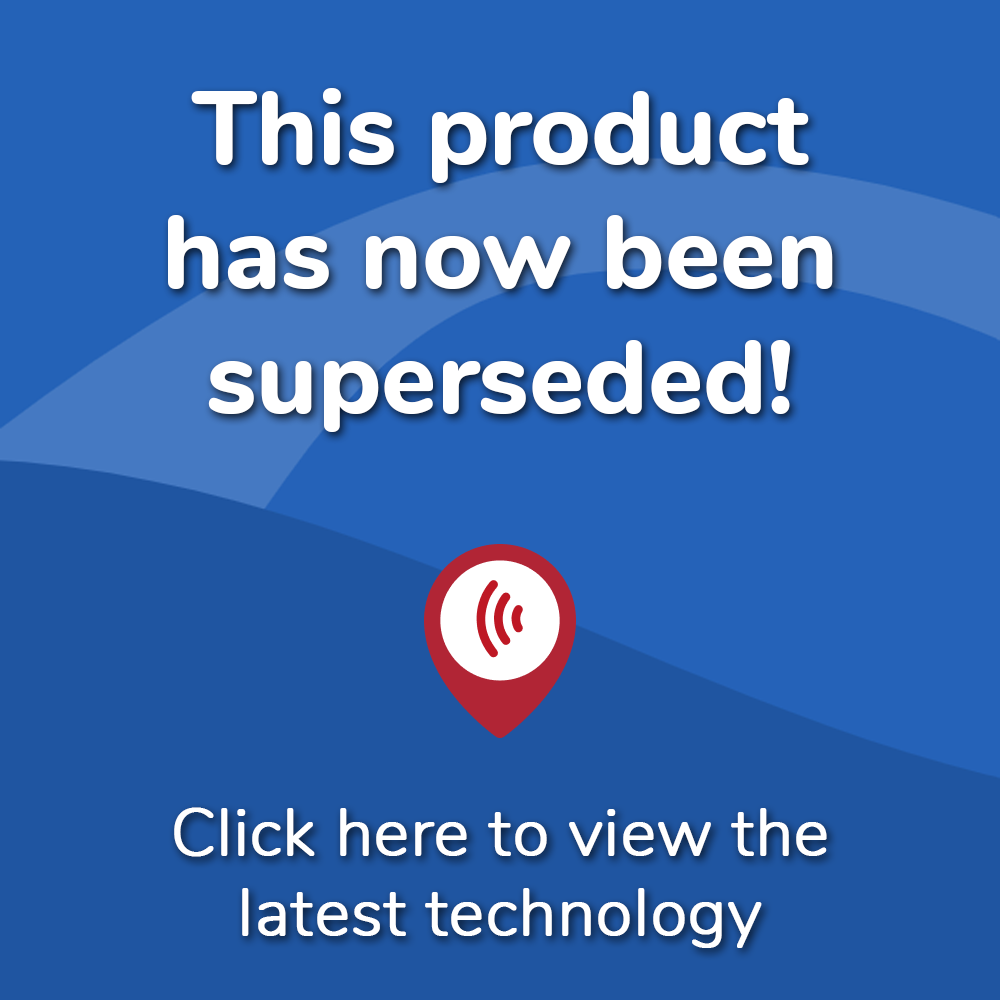WARNING DISCONTINUED Newer Unitron Models Available

What's included in our hearing aid prices?
Details & Features
The Halo i110 is part of the made for iPhone range from Starkey. With a powerful processor and Bluetooth 4.0 technology it is compatible with all Apple devices running the IOS 7.1 software. This includes the iPhone, iPod and iPad.
This premium level hearing aid contains 16 sound imaging channels which process and improve the clarity of each frequency to give you great quality of sound. It also uses Spectral iQ to process the higher frequency sounds, such as the voices of women and children, which are often harder to hear. These higher pitched sounds are lowered in frequency to bring them within your hearing range.
ISO compression reduces the volume of loud speech and raises the volume and clarity of quieter, softer speech helping you to hear a range if different voices clearly. This technology also helps to separate the voices so you can distinguish one speaker from the other.
The Acoustic Scene Analyser program contains five levels which pick up annoying and distracting background noise such as wind and machinery and lowers the volume so that you can still hear voices and other sounds around you. It also improves the clarity of soft speech and voice sounds making it easier to follow conversations in different situations. The annoying whistling feedback sounds are removed with the Purewave feedback eliminator, without distorting any other sounds around you.
With the Halo’s maximum noise reduction strength, as well as directional microphones letting you focus your hearing, these hearing aids are suitable for demanding listening situations in crowded places such as the theatre, parties and restaurants. A car program even reduces the road and traffic noise so that you can hear the other people in the car, or the radio, without straining to hear.
Due to their wireless capability your hearing aids will synchronise their settings so they are always on the same program and any adjustments you make will immediately change both aids together.
You can change programmes easily and fine tune your settings using your iPhone and Starkey’s Trulink App, which is free to download from the Apple store. This app turns your iPhone into a remote control for your hearing aids. A visual indicator bar gives you total control (within your hearing settings) over your volume as well as the treble and bass, so you can fine tune your hearing until it is on the best setting for you.
You can save all your favourite settings as Trulink memories using the app, and changing from one to another is as simple as tapping your touch screen. You can also use the GPS facility in your iPhone to tag your favourite locations such as work or a coffee shop or restaurant, and link them to your Trulink memories. The next time you are in the same location the app will activate the linked memory, so that your hearing aids will automatically be on the best settings as soon as you arrive.
The ‘find my hearing aids’ program ensures that your hearing aids will not get misplaced, and helps you to find them with an indicator on the app telling you how far away they are.
One of the most significant features of the Halo range is the ability to stream the sound from your iPhone, iPad and iPod directly to your hearing aids, without the need for additional hardware such as Bluetooth loops. This means that you can take calls using voice or facetime on your iPhone by tapping the touch screen and the caller’s voice will be streamed directly to your hearing aids. You can stream your favourite music or the radio to your hearing aids, without needing a different set of headphones. You can stream films and video from your iPad as well as join in with Skype calls or online hangouts. It is quick and easy to switch from sound streaming to normal hearing programs using the Trulink app.
You can also turn your iPhone into a microphone to listen to a speaker or a group of people at a meeting or restaurant. Simply turn on the microphone and set the phone to sound streaming. The sound from the microphone will be sent straight to your hearing aids like a phone call whilst cutting out the background noise. You can also record meetings and conversations to play back later.
The Halo i110 is currently available in a RITE (Receiver In The Ear) model with small and discrete casing which is available in a variety of neutral colour options. This makes it easy to either hide your hearing aid or show it off as a stylish accessory, depending on your personal preference.
Paul Harrison is an audiology expert at Hearing Aid UK, with over 20 years of audiology experience and a member of the British Society of Hearing Aid Audiologists Council (BSHAA) between 2015 - 2020.
Looking for a Newer Starkey Hearing Aid Model?
Latest Ranges AvailableOur specialist service includes:
Do not spend hundreds of pounds without getting a second opinion from us.
Please call us on 0800 567 7621
 Not only are the prices great, but the service is fantastic! Many thanks to your team.
Not only are the prices great, but the service is fantastic! Many thanks to your team.What's included in our hearing aid prices?
If you are looking at this page then it is likely that an audiologist has suggested that you purchase this particular hearing aid, so is this the best model for you?
In general, any audiologist will always recommend to you the model that best suits your needs. Here is a useful checklist to make sure that is the case.
- Audiologist level of knowledge: The audiologist you have seen will hopefully have a wide knowledge of all available hearing aids, however, some will only be familiar with a small number of brands and therefore may not really be in a position to know which model is the best for you. It is OK to challenge their recommendation and ask them to justify why this particular brand is the one for you.
- Do research: Read about the hearing aid that was recommended. Does it seem like it will suit your lifestyle? Does it have more or fewer features than you need?
- Be aware of sales targets: Many high street retailers have specific tie-ins to a particular manufacturer/brand. The hearing aid they have suggested may still be the correct one for you, but do your research so that you know why they might have recommended it.
If in doubt, feel free to give us a call. That's what we're here for. In the meantime, read all about our review of the best hearing aids for 2025 here
If you have significant hearing loss in both ears, you should be wearing two hearing aids. Here are the audiological reasons why:
Localisation: The brain decodes information from both ears and compares and contrasts them. By analysing the minuscule time delays as well as the difference in the loudness of each sound reaching the ears, the person is able to accurately locate a sound source. Simply put, if you have better hearing on one side than the other, you can't accurately tell what direction sounds are coming from.
Less amplification is required: A phenomenon known as “binaural summation” means that the hearing aids can be set at a lower and more natural volume setting than if you wore only one hearing aid.
Head shadow effect: High frequencies, the part of your hearing that gives clarity and meaning to speech sounds, cannot bend around your head. Only low frequencies can. Therefore if someone is talking on your unaided side you are likely to hear that they are speaking, but be unable to tell what they have said.
Noise reduction: The brain has its own built-in noise reduction which is only really effective when it is receiving information from both ears. If only one ear is aided, even with the best hearing aid in the world, it will be difficult for you to hear in background noise as your brain is trying to retain all of the sounds (including background noise) rather than filtering it out.
Sound quality: We are designed to hear in stereo. Only hearing from one side sounds a lot less natural to us.
Fancy some further reading on this topic? You can read about why two hearing aids are better than one in our article, hearing aids for both ears, here
For most people, the main benefit of a rechargeable hearing aid is simple convenience. We are used to plugging in our phones and other devices overnight for them to charge up. Here are some other pros and cons:
For anybody with poor dexterity or issues with their fingers, having a rechargeable aid makes a huge difference as normal hearing aid batteries are quite small and some people find them fiddly to change.
One downside is that if you forget to charge your hearing aid, then it is a problem that can't be instantly fixed. For most a 30-minute charge will get you at least two or three hours of hearing, but if you are the type of person who is likely to forget to plug them in regularly then you're probably better off with standard batteries.
Rechargeable aids are also a little bit bigger and are only available in Behind the Ear models.
Finally, just like with a mobile phone, the amount of charge you get on day one is not going to be the same as you get a few years down the line. Be sure to ask what the policy is with the manufacturer warranty when it comes to replacing the battery.
Looking for more information on rechargeable hearing aids? Read our dedicated page on the topic here
For most people, the answer is yes. But it's never that simple.
The majority of hearing problems affect the high frequencies a lot more than the low ones. Therefore open fitting hearing aids sound a lot more natural and ones that block your ears up can make your own voice sound like you are talking with your head in a bucket. Therefore in-ear aids tend to be less natural.
However the true answer is we can't tell until we have had a look in your ears to assess the size of your ear canal, and until we have tested your hearing to see which frequencies are being affected.
People with wider ear canals tend to have more flexibility, also there are open fitting modular CIC hearing aids now that do not block your ears.
There is also the age old rule to consider, that a hearing aid will not help you if it's sat in the drawer gathering dust. If the only hearing aid you would be happy wearing is one that people can't see, then that's what you should get.
Most people can adapt to any type of hearing aid, as long as they know what to expect. Have an honest conversation with your audiologist as to what your needs are.
Generally speaking, six or more. Unless it's none at all.
The number of channels a hearing aid has is often a simplistic way an audiologist will use to explain why one hearing aid is better than another, but channels are complex and it is really not that straightforward. Here are some reasons why:
Hearing aids amplify sounds of different frequencies by different amounts. Most people have lost more high frequencies than low and therefore need more amplification in the high frequencies. The range of sounds you hear are split into frequency bands or channels and the hearing aids are set to provide the right amount of hearing at each frequency level.
Less than six channels and this cannot be done with much accuracy, so six is the magic number. However, a six channel aid is typically very basic with few other features and is suitable only for hearing a single speaker in a quiet room. The number of channels is not what you should be looking at, it's more the rest of the technology that comes with them.
As a final note, different manufacturers have different approaches. One method is not necessarily better than any other. For example, some manufacturers have as many as 64 channels in their top aids. Most tend to have between 17 and 20. One manufacturer has no channels at all.
Hearing aids are easily lost, misplaced or damaged and typically are one of the most expensive personal possessions an individual can own. We offer hearing aid warranty coverage for £80 per year per aid. Find out more about this service we provide here
All our audiologists use the very latest technology and provide the full range of tests to accurately measure your hearing for free. Find out about what hearing healthcare services we offer all our customers here
Hearing Aid UK offers all their customers free home visiting services, even in a care home environment, for no extra cost. Including hearing tests, fittings, maintenance, check-ups and much more in the comfort of your own home and at your convenience. Find out more information about our home visits here
Here, at Hearing Aid UK, we are dedicated to offering low hearing aid prices. We achieve this by having no head office and low marketing costs. Our hearing aid prices are amongst the lowest you will find anywhere in the world. Explore our prices, brands, and models here
Ask the Experts
6 Morton Lane
Walkwood
Redditch
Worcestershire
B97 5QA
Latest Launch
When we refer to a product as 'Latest Launch', we mean it is the latest to be released on the market.
New
When we refer to a product as 'New', we mean that the product is the newest hearing aid model on the market.
When we refer to a product as 'Superseded', we mean that there is a newer range available which replaces and improves on this product.
Older Model
When we refer to a product as an 'Older Model', we mean that it is has been superseded by at least two more recent hearing aid ranges.



